Posted on
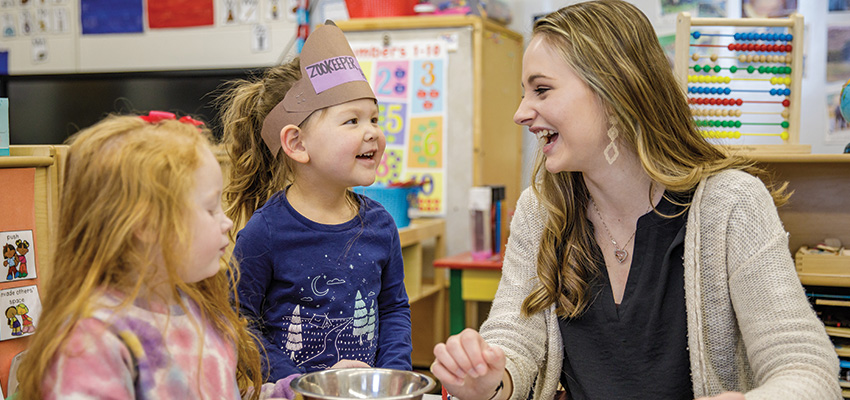
If you’ve ever dreamed of making a lasting impact in the lives of young children, but your career path led you elsewhere, it’s not too late to pivot. Whether you’re coming from the corporate world, healthcare, social work, or other fields, the demand for skilled early childhood educators has never been higher.
Northwestern College’s online Master of Arts in Teaching (M.A.T.) in Early Childhood Education is designed specifically for career changers who already hold a bachelor’s degree but are not yet licensed to teach. This flexible, fully accredited program offers a direct route to licensure and equips you with the tools to support and educate children from birth through third grade.
In this article, we’ll explore the key benefits of pursuing this degree, from licensure and flexibility to career outcomes and the deep personal fulfillment that comes with shaping the early years of a child’s development.
Transition into Teaching with Confidence
Career changers without a teaching license can seamlessly step into education through Northwestern’s M.A.T. program. It leads to a birth through grade 3 inclusive teaching license, including special education endorsement, enabling graduates to teach students with and without IEPs. This comprehensive licensure bundle is rarely offered outside traditional education pathways.
Fully Online & Flexible Format
With 100% online, asynchronous courses, you maintain your current job and schedule. Classes start every 8 weeks, letting you take just one course at a time and complete the 33–44 credit program in around two years.
Affordable & Financially Supported
Northwestern offers a competitively priced program with additional financial incentives including:
- TEACH Grant eligibility for those pursuing high-need roles
- Alumni Grant providing the first class tuition-free to NWC alumni
Grounded in Research & Best Practices
The program’s curriculum is built on proven early childhood education research:
- Technology teaching and learning strategies support students to effectively use technology in classrooms to enhance learning, engagement, and communication
- Focused child development courses equip you to support typical and atypical growth in cognitive, emotional, and physical domains
- Literacy strategies emphasize early reading and language acquisition essentials
Practical, Workforce-Ready Training
Beyond theory, the M.A.T. includes a student teaching block (4–14 credits, based on previous field experience) that provides real classroom experience under guidance. Graduates are ready to step into roles as licensed teachers on day one.
Meet a Nationwide Demand
There’s increasing demand and improved state support for early childhood educators. Iowa recently raised teacher salaries, demonstrating growing investment in quality education. Graduates enter the field with credentials aligned to both licensure requirements and community needs.
A Supportive Christian Academic Community
Northwestern College is an accredited institution rooted in Christian values, with strong faculty mentorship and flexible scheduling tailored for adult learners. The institutional focus on fostering close-knit interaction and personal growth alongside professional development is unmatched.
Final Thoughts
If you’ve ever felt a pull toward education, especially guiding young children during their formative years, Northwestern College’s online M.A.T. in Teaching in Early Childhood is your bridge to meaningful, impactful work. You’ll earn licensure, gain practical experience, and join a profession that both nurtures children’s futures and answers your call.
Ready to begin? Classes start every 8 weeks with rolling admissions and no GRE or application fee. Learn more here or contact your enrollment counselor here to start your next chapter.
Posted on

Why Cybersecurity Is Now a Core Leadership Responsibility
Cyber threats are no longer a technical issue, they’re a boardroom concern. Over the past year alone, reported data breaches increased by 20%, and according to a recent industry survey, 75% of cybersecurity professionals say the threat landscape is now the worst it’s been in five years.
This isn’t just a matter of firewalls and malware detection. It’s about business continuity, brand reputation, customer trust, and regulatory exposure. Cybersecurity has become a strategic risk, one that leaders can no longer delegate away.
When a Breach Happens, It's Not Just IT That Takes the Hit
In today's digital economy, trust is currency. A single breach can erode it overnight. Consumers expect their data to be protected. Stakeholders expect resilience. Regulators expect compliance. And when those expectations aren’t met, the fallout affects every corner of an organization from operations to legal to PR.
Yet only half of cybersecurity professionals believe their organization has the tools in place to respond effectively to a breach. This gap between rising threats and internal preparedness points to a deeper issue: cybersecurity isn’t just about the tools you have. It’s about the leadership you cultivate.
Cyber Risk Is Business Risk
Modern cyber threats, from ransomware and phishing to insider threats and nation-state attacks, don’t respect departmental boundaries. They impact entire ecosystems. That’s why executive leaders must understand:
- How cybersecurity aligns with overall enterprise risk management.
- The fundamentals of governance, compliance, and response frameworks.
- The ethical and legal dimensions of data use and digital defense.
- The business case for investing in cybersecurity, not just as a cost center, but as a value-preserving function.
Cybersecurity leaders are no longer just technologists. They’re educators, risk stewards, communicators, and strategic advisors.
From Awareness to Action: Building Resilient Organizations
Effective cybersecurity leadership requires a multidisciplinary mindset. Yes, it involves technical awareness—but more importantly, it demands strategic vision, ethical grounding, and organizational fluency. Leaders must be equipped to:
- Evaluate cybersecurity posture at the enterprise level.
- Communicate risk and resilience strategies to non-technical stakeholders.
- Foster a security-aware culture across all teams.
- Make informed decisions when, not if, an incident occurs.
These are leadership skills. And like all leadership skills, they can be taught, refined, and applied across industries.
Preparing Leaders to Face What’s Next
As the threat landscape becomes more complex, organizations need leaders who can meet the challenge head-on—not just with technical knowledge, but with the clarity and confidence to guide others through it.
At Northwestern College, our MBA specialization in Cybersecurity prepares professionals to stand out. Through a uniquely Christian perspective, students examine governance, risk management, compliance, and even ethical hacking principles, students learn how to lead resilient, security-conscious organizations in a high-stakes digital world. Learn more here.
Because the cost of a breach isn’t just data. It’s trust. And rebuilding that starts at the top.
Sources:
ISC2. (2023). Cybersecurity workforce study 2023. https://media.isc2.org/-/media/Project/ISC2/Main/Media/documents/research/ISC2_Cybersecurity_Workforce_Study_2023.pdf
Madnick, S. E. (2023, December). The continued threat to personal data: Key factors behind the 2023 increase (White paper). Apple. https://www.apple.com/newsroom/pdfs/The-Continued-Threat-to-Personal-Data-Key-Factors-Behind-the-2023-Increase.pdf
Posted on

In an age where nearly every action, transaction, and interaction generates data, you might expect that most organizations are thriving in a data-driven culture. But the reality tells a different story.
A 2024 survey of Fortune 1000 CIOs revealed that over 60% of companies still haven’t established a truly data-driven culture. Despite access to vast amounts of information, many businesses are struggling to translate raw data into meaningful decisions. It’s not for lack of dashboards or reports, it’s for lack of leadership that knows how to use them.
The Data Deluge Isn’t the Problem. The Disconnect Is.
Most organizations don’t need more data. They need better ways of understanding, communicating, and applying it. In high-performing businesses, data isn’t locked in a silo, it’s embedded in everyday decision-making. That’s not something software alone can solve. It requires a shift in how people lead, collaborate, and think.
Strategic leaders today must be able to:
- Ask the right questions of their data.
- Understand what their analytics tools can, and can’t, reveal.
- Translate insights across departments, from IT to marketing to operations.
- Balance intuition with information in decision-making.
Analytics Is a Leadership Skill
Business analytics is often misunderstood as a purely technical field, but its true power lies in its strategic use. The organizations exceeding their goals, 77% more likely to do so, according to the same 2024 survey, are those where leaders drive a culture of curiosity, accountability, and evidence-based thinking.
Being data-driven doesn’t mean replacing human judgment with algorithms. It means equipping decision-makers at every level with the literacy and confidence to work with data intelligently. And that only happens when leaders champion both analytics and communication.
Bridging the Gap Between Insight and Action
The gap between data and decisions is where many businesses stall. They may invest in tools but fail to build the internal capacity to use them well. That’s why the future of business analytics isn’t just technical, it’s transformational.
What today’s organizations need are professionals who:
- Understand how to model and interpret data.
- Can spot patterns others miss.
- Know how to build trust in analytics across teams.
- Can clearly communicate complex findings to drive action.
This combination of literacy and leadership is what turns analytics from a function into a force multiplier.
The Opportunity Ahead
As industries continue to digitize and automate, analytics is no longer a specialized corner of business, it’s at the center. But turning insight into advantage will depend on who’s interpreting the numbers, telling the story, and making the call. Because data doesn’t lead. People do.
That’s why more professionals are seeking advanced education that goes beyond technical training. At Northwestern College, our MBA in Business Analytics is designed for leaders who want to drive impact, not just through numbers, but through influence in a Christian Academic Community. The program equips students to understand data deeply, communicate insights clearly, and foster a culture where evidence-based decisions thrive. It’s an MBA for those who want to lead the change—across industries, across teams, and across the complex challenges ahead. Learn more here.
Sources:
Wavestone. (2024). 2024 Data & AI Executive Leadership Survey. Retrieved June 11, 2025 from https://www.wavestone.com/en/insight/data-ai-executive-leadership-survey-2024/.
Posted on
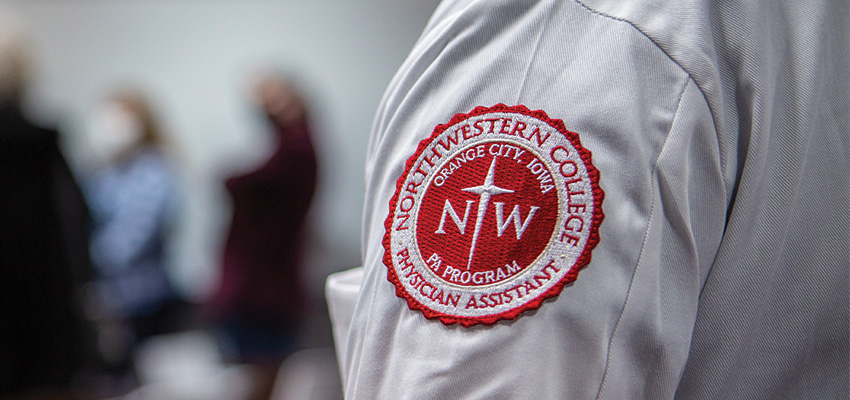
Some experiences stay with us long after we leave the room. The following reflection was shared by a Northwestern College PA student and offers a raw and reverent glimpse into the reality of life, loss, and duty in a clinical setting. Shared with permission, this moment reminds us of the quiet humanity behind every alarm and protocol.
Code
Manage compressions, ensure correct placement, depth, rate. Place the pads, set up a 12 lead, record meds. Identify pulses, charge the defibrillator, assess the rhythm. Breath, breath. Respond and act quickly. Work as a team. Minutes feel like seconds, and things happen faster than you’d expect. The rhythmic pumping of compressions and beeping of monitors takes up most of the air in the room. Chaos would be expected, with so many tasks simultaneously being completed, but the room is calm. In all of that, I am caught up. Each person does their job, we do it well, we know our protocols. We all seamlessly identify a need and fill it. In that moment we all have the same focus. I found myself looking at her open eyes, green and distant, quickly I redirected to focusing on my 120 beats per minute pace. Only listening for a new instruction from the doc. Compress, recoil, compress.
But what happens after this. The doctor directs “stop compressions”. I lift my hands off the chest I had spent 10 cumulative minutes compressing, I did not even know her name. I found myself thinking “wow my hands hurt” as I noticed an extra electrode was placed right in the center of her chest. Immediately I felt guilty for this. I looked toward her face and was caught up in a wave of remembering her humanness. Her husband entered the room. We
had been pushing medications, administering shocks. The doctor gave the word and all of that stopped. Wires and monitors were disconnected. The room was still quiet. Now there were only a few of us cleaning the room. It felt anticlimactic. He walked over and held her hand. He said “I hear you’re from Minnesota” and a tear fell from his eye. She lay there. We walked out of the room and went back to work. A new patient in room 5. We did not know her, nor did we know him, but we could feel the weight of her loss. The contrast of logic and focus, to the sadness witnessed just after was confusing. And yet, we keep on going.
Later, when I get in my car and turn on a song that makes me think of the life she had lived, I will cry. And cry a lot. But, here and now I will see that patient in 5. And I will give them the same attention I gave her.
Healthcare professionals carry the weight of both urgency and emotion each day. It's a reminder that, behind the precision and professionalism, there are hearts that feel deeply, even when the world outside doesn’t see it. If you feel called to serve with both skill and compassion, explore what it means to become a PA through our Physician Assistant program at Northwestern College.
Posted on
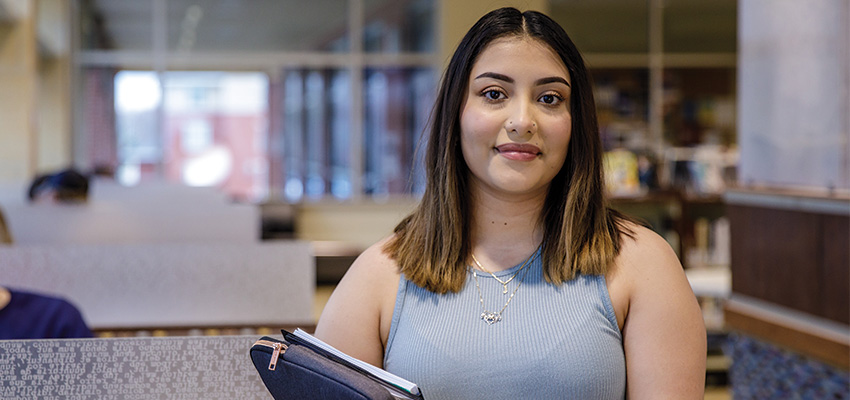
In a courtroom, every word counts. Legal interpreting is more than just translating; it’s the vital link that ensures justice is not lost in communication. As the U.S. population grows increasingly diverse, so does the demand for skilled interpreters who can uphold the integrity of our legal system while serving individuals with limited English proficiency.
Northwestern College’s Legal Interpreting Certificate equips bilingual professionals with the tools they need to thrive in this high-stakes, high-impact profession. Rooted in academic excellence and Christian values, this 15-credit online program prepares students to serve in courtrooms, law enforcement settings, legal offices, and beyond.
Designed for working adults, the program offers:
- Flexible online coursework taught by experienced practitioners
- Focused training in courtroom procedures, legal terminology, and ethics
- Preparation for the NCSC certification exams
- Supportive Christian academic community that champions both skill and service
For Spanish/English bilingual professionals, this program is more than a credential, it’s a calling. Legal interpreters don’t just interpret words; they ensure others are heard. Northwestern’s program makes this essential work accessible, affordable, and mission-driven.
Whether you're already working in interpretation or are ready to enter the legal field with purpose, our certificate provides the foundation to stand out and serve others.
Ready to make your voice, and theirs, count?
Explore Northwestern’s Legal Interpreting Certificate →
Posted on

Why Leaders Can’t Afford to Ignore AI
In every industry, artificial intelligence is shifting from novelty to necessity. What was once the domain of engineers and data scientists has quickly become a boardroom priority. And yet, many business leaders still feel unprepared to make sense of AI, let alone lead with it.
That’s a problem.
We’re at a point where key business decisions increasingly involve AI-driven insights, automation tools, and predictive models. Whether you're overseeing marketing strategy, supply chain logistics, customer experience, or product innovation, AI is in the room. The question is: are you ready to lead when it is?
It’s Not About Coding, It’s About Clarity
There’s a common misconception that understanding AI requires deep technical knowledge. But leadership doesn’t demand code, it demands comprehension. Leaders don’t need to build algorithms, but they do need to ask the right questions about how AI is developed, how it’s applied, and what its limitations might be.
For example:
- Can we trust the data this model is based on?
- What kind of bias might be built into this system?
- Is this tool enhancing or undermining our strategic goals?
These are not technical questions, they’re leadership questions.
Strategic Leadership in an AI-Driven World
As AI continues to evolve, so do the expectations placed on those at the helm of organizations. We’re moving beyond “What is AI?” and into “How do we integrate AI in a way that is ethical, transparent, and aligned with our values?” This means:
- Leaders must understand AI's capabilities and constraints.
- Teams need guidance to work effectively with AI tools.
- Organizations must create frameworks for responsible use.
It’s no longer enough to delegate “the AI stuff” to a tech team. Leaders are being asked to engage directly in decisions about automation, data governance, AI procurement, and policy. And they’re being asked to do so with confidence, not caution.
Preparing for What’s Next
The future of leadership is not about mastering every new tool that hits the market, it’s about developing the mindset and literacy to lead through change.
AI isn’t replacing leaders. But it is reshaping what effective leadership looks like.
Organizations that thrive in this next era will be those led by individuals who can bridge the gap between technical innovation and human-centered strategy. These are the leaders who stand out in guiding teams with clarity, ask smarter questions, and make decisions that are not only efficient, but wise. As the landscape evolves, our challenge is to keep pace not just with the technology, but with the trust and responsibility that come with it.
Ready to Meet the Moment?
Explore how Northwestern College’s MBA with a specialization in Artificial Intelligence can help you lead with purpose and clarity through a uniquely Christian world-view in a rapidly evolving business landscape. Learn more about the AI specialization in our MBA program.
Posted on
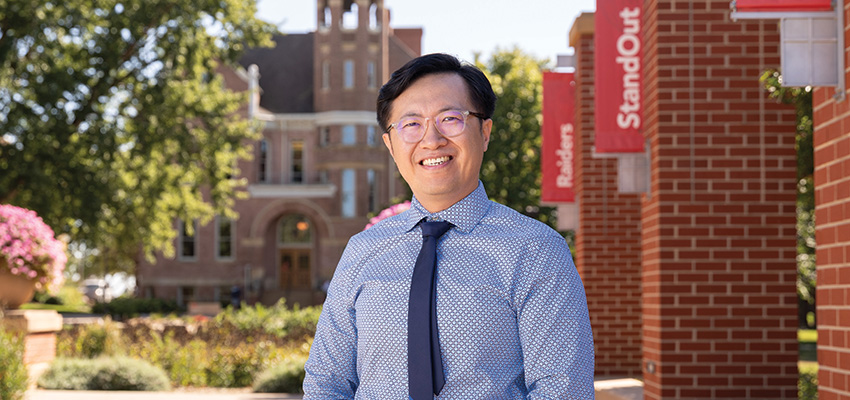
How Faith-Informed Leadership and Strategic Change Can Help You Stand Out
In today’s fast-moving business environment, innovation is often celebrated as the engine of growth and competitive advantage. But what happens after the brainstorming session? After the product launch? After the strategy pivot?
The truth is, innovation without effective change management often fails to deliver lasting impact. Ideas may be groundbreaking, but without the right leadership and process to embed them into an organization’s culture and operations, they rarely stick.
This is where today’s business leaders have an opportunity to Stand Out by combining strategic thinking with the emotional intelligence and resilience needed to guide teams through change.
The Hardest Part of Innovation? Implementation.
It’s easy to focus on the creative side of innovation—generating new ideas, developing disruptive technologies, or exploring fresh business models. But turning innovation into sustainable change requires a different skill set. Leaders need to:
- Navigate organizational resistance
- Communicate change effectively across teams
- Align innovation efforts with company strategy
- Monitor and adapt change initiatives over time
- Foster a culture that welcomes, not fears, change
And for leaders shaped by a Christian academic community, these responsibilities come with an added layer of purpose: leading change in ways that reflect integrity, care for others, and a commitment to ethical decision-making.
Change Leadership Is Now a Core Business Competency
Forward-thinking organizations are placing greater value on leaders who can manage both sides of the equation: innovation and change management. Today’s most effective business leaders are not only idea generators, they’re change champions and they know how to bring people along for the journey, build buy-in, and sustain momentum long after the initial launch. In short, they Stand Out by making change not just possible, but successful and lasting.
Preparing Leaders to Move Ideas from Concept to Reality
At Northwestern College, our MBA specialization in Innovation & Change Management was designed with this leadership gap in mind and it’s offered within a Christian academic community that encourages students to align professional leadership with personal values.
Students in the program don’t just learn how to develop innovative strategies, they gain the tools to implement them effectively, ethically, and with empathy. Through real-world application, the curriculum covers areas like organizational development, strategic planning, change communication, and systems thinking.
In today’s business world, it’s not enough to have good ideas. Leaders must know how to turn those ideas into action and action into lasting results. If you’re ready to Stand Out as a leader who can both envision change and deliver it, check out our flexible and affordable MBA today. Learn more about Northwestern’s MBA and Innovation and Change Management Specialization.
Posted on
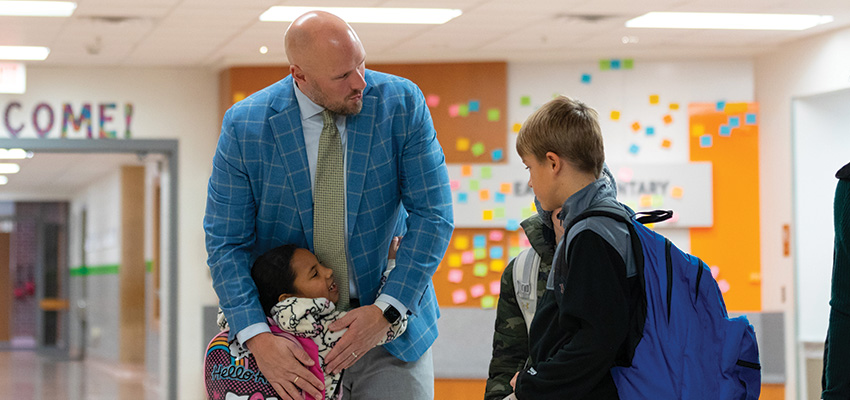
Two related and very similar qualities can lead to success for all of our students. They are relatively simple concepts and parents and school personnel have frequent opportunities to teach, develop and reinforce them.
The first of these qualities is what Stanford professor and psychologist, Carol Dweck calls a “growth mindset.” Those with a growth mindset believe that success comes from effort. On the other hand, people who believe that success comes from being born with the gift of intelligence or talent have a “fixed mindset.”
The second, related quality, is “Grit,” which University of Pennsylvania professor and psychologist Angela Duckworth defines as, “persistence, determination & resilience.”
Having a growth mindset is a great start. It gives us hope that we can affect the outcome of any situation. It gives us a reason to try and a reason to take risks. When we follow up with grit, we are able to deal with the disappointments and setbacks that inevitably come. We are able to focus on the benefits of the journey and not get discouraged when obstacles arise.
As parents, one of the most difficult things is watching our children struggle. Our instinct tells us to protect them from any pain and hurt that comes from failure. In some cases, we do need to step in, but in more, we need to put our energy into encouraging them to persist and believe that their efforts will make a difference. We also need to continually focus on learning—whether it is in a classroom, in relationships, or in an athletic or fine arts activity.
If our real expectation is that our children do their best, learn as much as they can, and act with character and integrity, we will praise and focus on those things and remove the focus and emphasis on a specific grade or an expectation for a certain amount of playing time. A’s and playing time are nice, but they are secondary to developing grit and adhering to a growth mindset.
These same principles of grit and a growth mindset are just as essential for educational leaders as they are for students. Pursuing a master's degree in educational administration requires the belief that leadership skills can be developed through effort and continuous learning. It also demands perseverance in the face of complex challenges, from navigating policy changes to supporting diverse student needs. As future administrators, modeling these qualities not only contributes to personal success but also sets the tone for a school culture that values resilience, growth, and the ongoing pursuit of excellence for all. If you're ready to take the next step in your leadership journey, learn more about Northwestern College’s M.Ed. in Educational Administration Program.
About the author
Russ Adams has served as the program director for Northwestern's Master of Education in Educational Administration and Principal Endorsement programs since 2024. Adams is also the assistant director for Northwestern's Center of Innovation and Leadership. Serving as superintendent of the MOC-Floyd Valley school district for 11 years, Adams was the recipient of the 2020-21 Iowa Superintendent of the Year, he previously served as principal of MOC-Floyd Valley High School from 2003 to 2013. He was recognized as the 2009 Iowa Secondary Principal of the Year and a 2003 recipient of the prestigious Milken Educator Award.
Posted on
Let's take time to pause during Teacher Appreciation Week to consider the profound calling and vital work of our teachers. In a rapidly evolving world, their dedication extends beyond the transmission of rote knowledge; it reflects a commitment to nurturing the hearts and minds of the young people entrusted to their care.
Our teachers navigate a complex landscape, integrating new technologies and addressing the diverse needs of their students. They are not merely instructors; they are often the hands and feet of compassion, offering guidance, social and emotional support, and a steady presence in a world that can feel increasingly uncertain.
It's also vital to acknowledge something profound: teaching is a uniquely human endeavor that AI cannot replicate. Our teachers are instrumental in fostering not only intellectual development but also character, resilience, and a sense of purpose. They are planting seeds of wisdom and truth in order to cultivate a harvest of thoughtful and engaged citizens. They are preparing students for a future we can only begin to imagine.
Therefore, our appreciation must be rooted in a respect for their vocations and more than a fleeting observance. Let it be a consistent outpouring of prayer, support, and gratitude, recognizing the profound responsibility and sacred calling they embrace as they shape the next generation within our community. May we, as people of faith, be a source of strength and encouragement for them in this vital work.
At Northwestern College, we believe that honoring teachers means equipping them for longevity, growth, and leadership in their calling. Our fully online Master of Education programs are designed to support educators at every stage of their journey—whether deepening classroom practice, stepping into new areas of leadership, or responding to the evolving needs of today's learners. As we celebrate Teacher Appreciation Week, we reaffirm our commitment to empowering those who shape the future, one student at a time. Explore our M.Ed. programs here.
Posted on
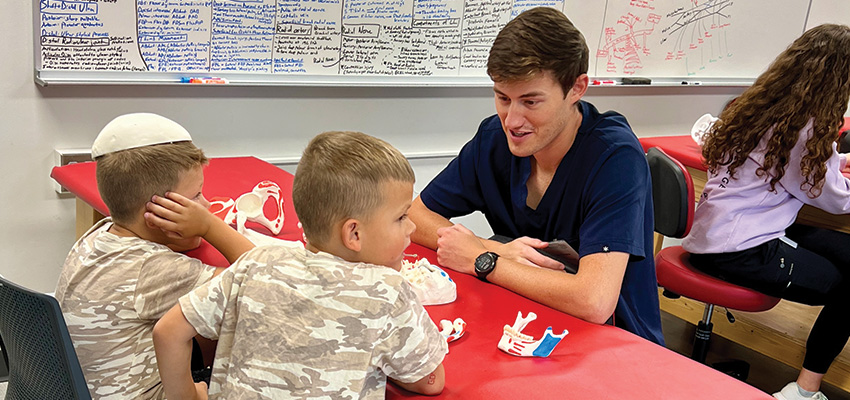
Earlier this month the Northwestern Physician Assistant program welcomed about forty kindergarteners into our classroom to learn about our profession. As to be expected, each kindergartener brought tons of energy and excitement. I was impressed to find how much these kids already knew about the PA profession. They gave examples like, “PAs are kind,” “PAs help people when they are sick,” and “PAs like working with others.” They were exactly right; these qualities exemplify what a PA is, and we were happy to share our skills with them. We broke into stations and focused on sharing with the kids the tools we use to do our job. The kids were able to practice taking blood pressures, using a stethoscope, and looking in ears. A major hit with the kids was the opportunity to look at our bone models and practice splinting broken limbs. Ideally, after having this exposure, the kids will be more comfortable at future medical appointments because they understand what tools are being used. I thoroughly enjoyed our time with the kids, and was glad to see they had a blast.
It was important for us to expose the kindergarteners to our program, and show them how school can be challenging and exciting at the same time. You never know, maybe there were some future PA students in the group. Another goal of this visit was to continue in community outreach, forming connections between the college and groups around town. This is great practice for me and my classmates, as we see community involvement being intertwined with our career at a PA. As a current student, I can see the support our program has from the community, and I am thankful to be surrounded by so many amazing people.
-Taylar Boerema, PA-S '26, Class President
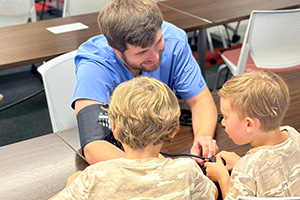 | 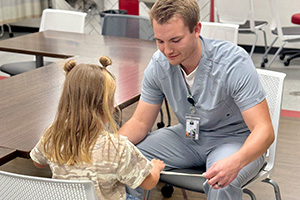 |
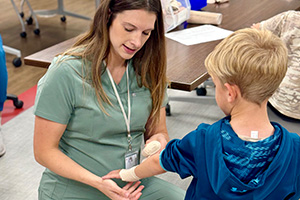 | 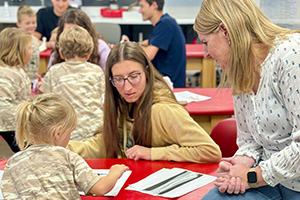 |
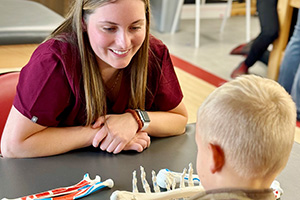 | 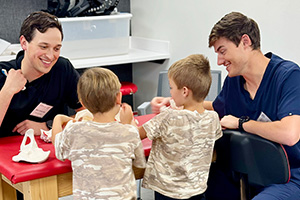 |
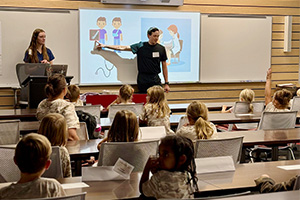 | 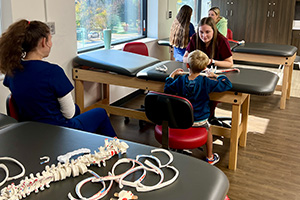 |
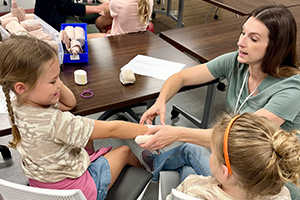 | 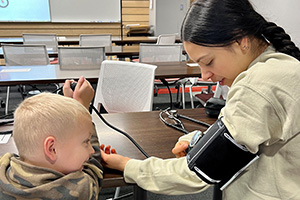 |
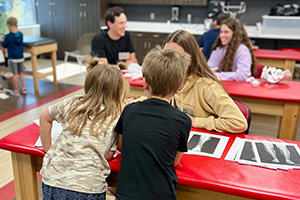 | 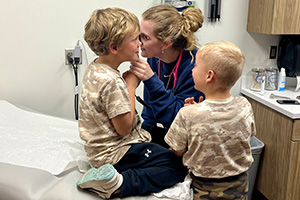 |
About the Author
Taylar is a member of the Northwestern College Physician Assistant class of 2026. She is currently studying to earn her Master of Science in Physician Assistant Studies and serves as Class President for her cohort. 
